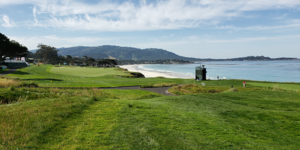Success at Cal-Riverside
I have the good fortune to serve on the USGA Turfgrass and Environmental Research Committee. Some of the duties of committee members include visiting universities with research projects in progress to see how the research is going and to visit universities where the committee would like to see a specific project in the future. Mike Kenna, Ph.D., director of Green Section research, leads the visits and is accompanied by two or three committee members and Green Section agronomists from the local region.
My most recent visit was to the University of California-Riverside (UCR). Jim Baird, Ph.D., leads the turfgrass program at UCR. In fact, Baird is the only university faculty member specializing in turfgrass science in the entire state of California. Talk about a big job. He organized a day of field plot tours, lab tours and meetings for committee members, university staff and students working in turf and two local superintendents closely involved with funding research at UCR.
As you might expect, the primary focus of research at UCR is on all things related to water. Marco Schiavon, Ph.D., postdoctoral researcher, leads a range of studies managing turf while using water in the most efficient manner possible. Some of the studies are watered with saline water that is manufactured on site to study turfgrass and soil response to saline water.
After talking to Baird and Schiavon, it’s clear that warm-season grasses, primarily bermudagrass, are the turf choices to conserve water in southern California. The challenge of using bermudagrass is the reluctance of many people, including some golfers, to accept the tan color of dormant bermudagrass. While turfgrass scientists have made considerable progress in breeding turfgrasses that use less water and in developing management practices that provide quality turf that requires less water, changing the public’s view on year-round green grass remains a big hurdle.
Baird and his staff conduct numerous pest-control studies focused on the specific needs of superintendents in California. In a state as big and geographically diverse as California, you can imagine the wide range of turfgrass problems that exist. Management and control of annual bluegrass (Poa annua), nematodes (Anguina pacifica), anthracnose and various weed species fill much of Baird’s time. He conducts many of his studies on golf courses in several regions of California in addition to the research at UCR.
California golf course superintendents deserve a big round of applause for providing funding and moral support for the UCR turfgrass research program. Superintendents are playing a major role in having and keeping a turfgrass scientist at UCR, and that’s a huge advantage for the state’s golf industry.
UCR’s turf program is a good example of what is needed to sustain other university turf programs. It starts with local or statewide interest from golf course superintendents. There needs to be widespread, consistent, genuine interest in university turf programs. Active support of all aspects of the program, from recruiting undergraduate students, hiring recent graduates, funding research and attending university sponsored educational events, all are vital for a successful university turf program.
Once local superintendents have committed to a program’s success it’s easier for private industry and associations to become involved. However, this is a two-way street. University turfgrass scientists need to listen carefully and respond appropriately to the needs of superintendents. There needs to be constant communication among all parties involved in university turfgrass programs.
Starting with graduate school, I have been fortunate to spend the majority of my career in an environment where strong university turf programs were the norm. That environment has changed and will continue to change. We all need to step up and support university turf programs so our industry can continue to flourish. I hate to think where golf course superintendents in California would be without Jim Baird at UCR.









